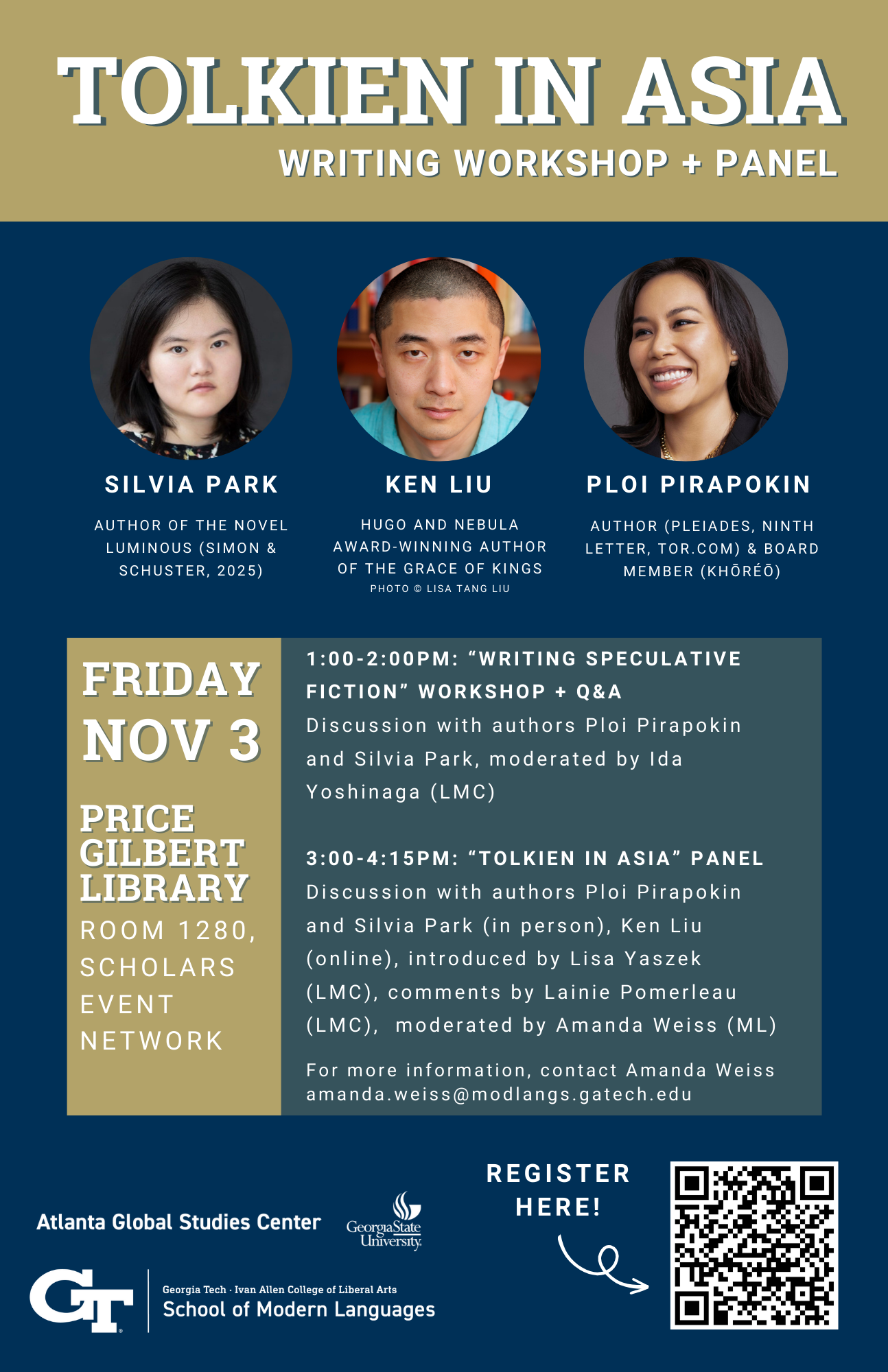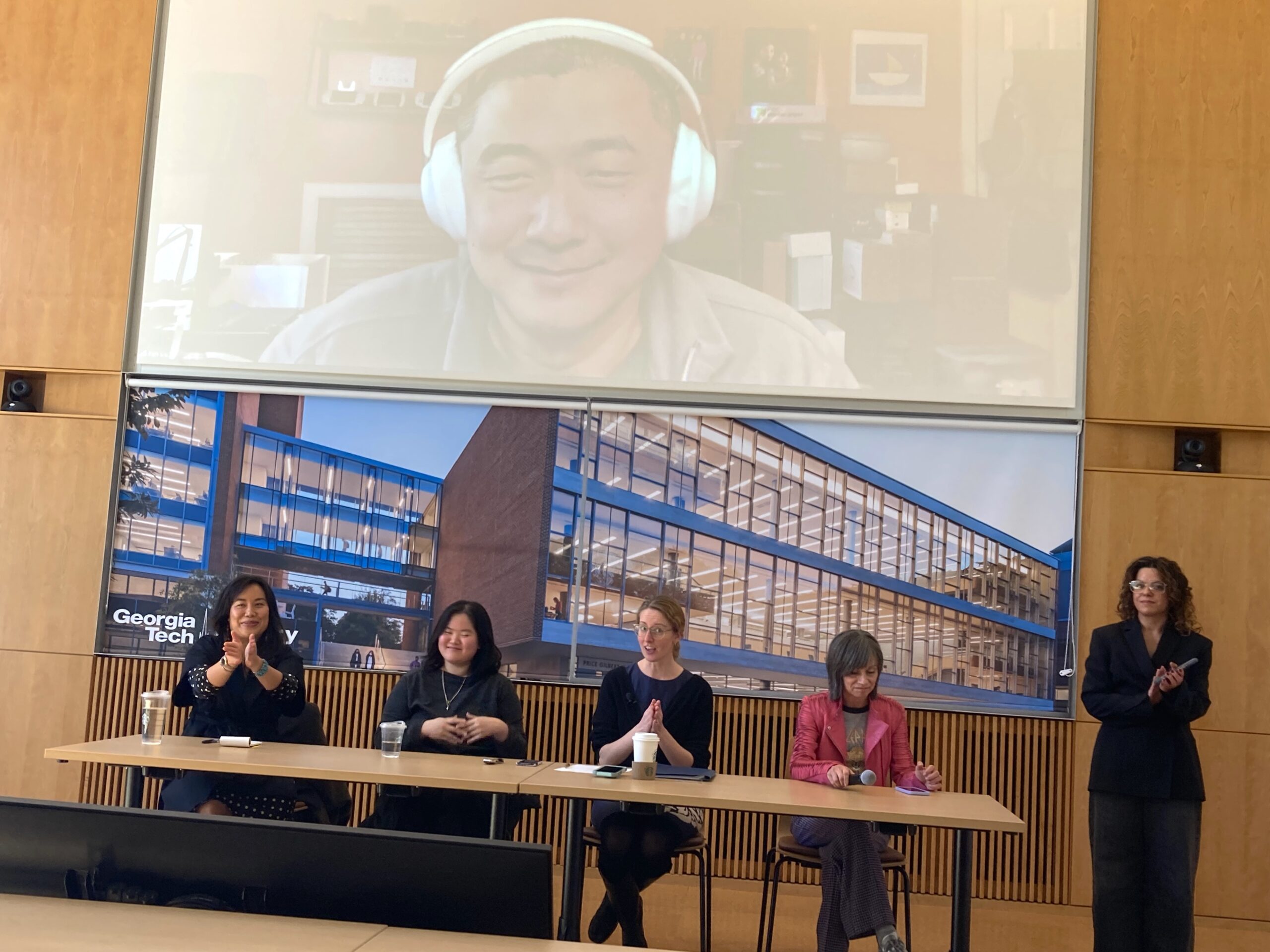“Editorial 2.2”
by Amanda Weiss
Dear Reader,
Welcome to our fourth issue, “Tolkien in Asia.”
This issue was born in my Vertifically Integrated Project, a lab centered on the study of East Asian Media. In fall of 2022, student Zhujun Wu mentioned that she had been born in Tokyo, where she used to live on the second floor of a home owned by Akiko Tanaka (or “Grandma Akiko,” as Zhujun knew her). Tanaka was the translator of the definitive Japanese translation of the Lord of the Rings, though her contributions as a female translator during the mid-20th century have often been overlooked. Zhujun wanted to write a corrective biography that would not only recognize Tanaka’s achievements as a translator of Western literature, but also as a compassionate advocate of cross-cultural exchange. Working with Tanaka’s daughter Maya and Zhujun’s mother (a friend of Tanaka’s), Zhujun–an undergraduate writing in her third language!–produced a thoughtful original biography and loving tribute to a remarkable person. We hope you enjoy her tremendous piece, “Remembering Akiko Tanaka.”

As with our previous issues, we began with the process of research. We discovered that in Tolkien’s world, the West is often associated with the sacred and everlasting. Aman (“the Blessed Realm”) is the continent where the Valar (divine spirits) reside. The elves “go west” to Valinor, a part of Aman that is revered for its beauty and incorruptibility. On Middle-earth, the West is connected to goodness and heroism: many of the heroic protagonists of The Hobbit/The Lord of the Rings come from idyllic western lands like the Shire.
Meanwhile, Tolkien’s East is often associated with that which is evil or unknown. Sauron, the second Dark Lord, was known as the evil rising in the east; his eventual seat of power, Mordor, was in the southeast. Many of the “Easterlings” of Middle-earth submitted to the Dark Lords–first Morgoth, then Sauron. Rhûn, the land on the eastern side of Middle-earth, is also where the Avari or “the Unwilling” elves initially settled instead of continuing on to the Undying Lands. Interestingly, Tolkien explicitly ties Rhûn–the land of the Avari and the Westerlings–to Asia. In a 1966 interview,1 Tolkien states, “Rhûn is the Elvish word for ‘east’. Asia, China, Japan, and all things which people in the west regard as far away” (Resnick 41).
Yet rather than reading into this a simple east-west binary, it is important to note that all is not quite so simple in Tolkien’s legendarium. The East is associated with more neutral–even positive–elements, such as birth and origins. The elves first awoke in Cuiviénen, a land to the far east; the first Men awoke in Hildórien, a land even further east. And the West is not incorruptible in Tolkien’s world: Númenor, an island of men to the west of Middle-earth, ultimately fell to Sauron and was destroyed by Eru Ilúvatar, the creator. Evil also notably emerges throughout Middle-earth, including among the “Free Peoples” of the West.


Our next step was to compile the issue. For our fiction section, we asked Ken Liu, a major figure in contemporary fantasy literature, to contribute a silkpunk piece from his Dandelion Dynasty universe, “None Owns the Air.” We also invited authors Silvia Park and Ploi Pirapokin to write original fantasy works exploring their interpretations of “Tolkien and Asia.” Their pieces, “Quicken, the Chase, the Deer” by Silvia and “IF YOU ASK ME, I SHALL COME” by Ploi, re-envision and expand upon Tolkien’s description of the East (Rhûn, Avari, Easterlings, etc.). In our non-fiction section, graduate student Jialuo Yu summarizes Tolkien’s delayed impact on Chinese fantasy. Finally, we interviewed Ken and Ploi about Tolkien’s influence and their respective approaches to writing fantasy.
In November 2023, we celebrated this issue with our first symposium. Silvia and Ploi joined us in person in Atlanta; Ken joined us online, and Zhujun joined us in the audience. Our productive conversations ranged from the business and craft of writing to the extent and significance of Tolkien’s influence. Special thanks to presenters Lisa Yaszek, Regents Professor of Science Fiction Studies, Ida Yoshinaga, Assistant Professor of Science Fiction Film & Television, and Lainie Pomerleau, medievalist and Brittain Postdoctoral Fellow. We’d also like to express our heartfelt thanks to Stuart Minson and the Atlanta Global Studies Center for their sponsorship of this issue. Thank you! We could not have created “Tolkien in Asia” without the support of the entire team.
Ni estel tye enjoime sina issue! [Quenya: I hope you enjoy this issue!]
Amanda Weiss
About the Editorial Team
Amanda Weiss is Associate Professor of Japanese at Georgia Institute of Technology, where she teaches courses on Japanese media and society and leads a Vertically Integrated Project in East Asian Media. Her most recent book is Han Heroes and Yamato Warriors: Competing Masculinities in Chinese and Japanese War Cinema (University of Hong Kong Press, 2023). Dr. Weiss is a 2018 graduate of the Clarion Science Fiction and Fantasy Writers’ Workshop and her favorite authors include Kelly Link, Ken Liu, Neil Gaiman, N. K. Jemisin, Carol Emshwiller, and Ted Chiang.
- Henry Resnick, “An Interview with Tolkien” issue published 1967, interview dated 2 March 1966, Niekas Volume 18 (archived on eFanzines.com) (accessed 11 February 2024), p. 41 ↩︎